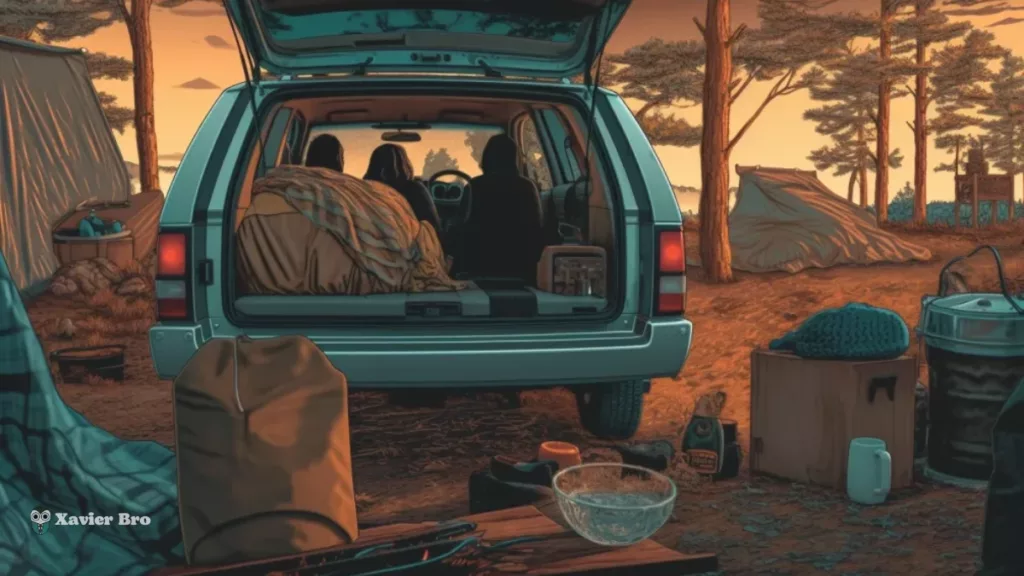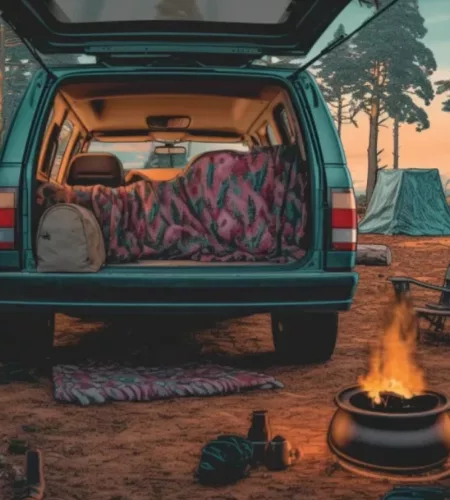Car camping allows you to experience the great outdoors while enjoying creature comforts. With just your car and some basic gear, you can camp in style. From state parks to national forests, there are endless destinations for car campers. But to make car camping an easy and fun way to connect with nature, you must know some basics.
Car Camping Basics
Let’s explore the top car camping basics in detail:
Planning Your Car Camping Trip
The first step of car camping basics is choosing your destination. Consider your interests and then research locations within a reasonable driving distance. National and state parks often have drive-in campsites that accommodate car camping. Check reservation policies and plan dates in advance since sites can fill up quickly during peak seasons. Obtain required permits for the location.
Consider alternate sites if your first choice is fully booked when you go to reserve. Determine who will join you on the trip and how long you plan to camp. The number of people and vehicles impacts what size campsite you will need and how much gear to bring. For first-timers, pick a trip of a suitable length – a weekend or 3-4 days max.
This allows you to get a feel for car camping without overpacking supplies. Inspect your car pre-trip and address concerns about lights like traction control light, which could signify issues handling off-road conditions often encountered when accessing campsites.
Essential Gear for Car Camping
Car campers need necessary camping gear plus some extras for comfort. Start with shelter – a standard tent with room for all occupants or a pop-up-style car camping tent or shades that work well.
Sleeping bags, sleeping pads, pillows, camp chairs, cookware, plates/cups/utensils, lighting, and insect repellents are also essential. Consider bringing a cooler, camping stove, portable table, Bluetooth speaker for entertainment, games, books, and playing cards to pass the time.
Packing Smart for Car Camping
Staying organized and packing smartly is important when car camping to maximize your vehicle space. Use plastic bins, bags, and organizers to group gear by category – kitchen, clothes, food, etc. This makes setting up camp easier. Pack items loosely, filling in gaps instead of cramming them tightly.
Put flat, hard things like folding tables on the bottom or edges. Stack larger, softer items in the middle. A cargo carrier works for extra gear but can be a pain. Plan menus to minimize food while still having filling camp meals.

Remember essentials like your reservation paperwork, permits, maps, and headlamps that you’ll need when you arrive. Keeping these car camping basic items handy and packing mindfully will make setting camp up a breeze.
Safety Considerations
While car camping poses fewer risks than remote backcountry adventures, remember you still spend time outdoors away from immediate assistance. Research potential environmental hazards like extreme weather, wildlife, insects, and plants so you can prepare adequately depending on your destination. Consider the capabilities of your car computer for navigation or communication in case of emergencies.
Keep food properly stored and secured, and store smelly items like toiletries away from your tent. Communication devices, extra water, and backup lighting can provide peace of mind if any issues occur. Never camp alone, especially in remote areas.
Leave No Trace Principles
Responsible campers follow Leave No Trace principles to minimize their impact so natural areas are preserved for future enjoyment. Car campers should consciously adhere to these guidelines. Carefully contain all trash and waste until you can properly dispose of it offsite. Avoid unnecessarily harming plants, disturbing wildlife, moving wood or rocks, or making new trails.
Be considerate of other visitors by staying quiet from 10 pm to 6 am. Follow all campfire rules for the area. Fully put out fires before leaving using water and stirring. Scatter cool ashes if allowed. The goal is to leave campsites pristine for the next visitors. We all share these spaces, so following Leave No Trace allows these beautiful areas to thrive for years.
Enjoying Outdoor Activities
A big benefit of car camping is having easy access to daytime activities and outdoor fun. Find out what’s available nearby: hiking, fishing, kayaking, climbing, biking, taking photos, and more. Pack the specialized gear you’ll need to enjoy your favorite interests. Plan what you do daily to make the most of the location.
Balance activities with relaxed time to sit at your site or explore the nearby area. Leave room for flexibility – unplanned adventures often make the best memories. Keep time open to discover unexpected gems and treasures as you go. Building this balance and flexibility into your days leads to a rewarding and memorable trip.
Connecting with the Car Camping Community
Camp near others in campgrounds to easily make new friends. Chat with neighboring campers about top destinations, activities, gear tips, and share stories. Experienced car campers gladly share knowledge gained over time. Solo travelers can enjoy the company around a group campfire. You’ll meet backpackers returning from remote treks, which could inspire you to explore further.
Troubleshooting Common Issues
Hope for blue skies and smooth camping but prepare for minor hassles bound to arise. Weather and minor injuries top the list. Pack extra blankets and warmer layers even for summer trips due to dropping temperatures. Bring tarps or shades to shelter from unexpected showers or unrelenting sunshine.
Have backup lighting, extra batteries, and power banks to prevent crises from dead devices. Store all smellables properly day and night to limit wildlife encounters. Keep an area map and compass handy even if relying on GPS devices in case of lost signals.
If parking for longer day excursions, engage your car immobilizer to deter potential break-ins. Identifying solutions ahead of time allows you to handle problems smoothly and continue enjoying your camping trip without worry.
Conclusion
With some planning yet realistic expectations, car camping lets most people enjoy the outdoors comfortably. You’ll perfect your setup and packing as you gain experience and learn what works through trying different things. Feel free to push your comfort zone slowly as you develop meaningful connections to nature. Let the ease of car camping open the door to bigger adventures ahead.
FAQs about Car Camping Basics
What type of car is best for car camping?
An SUV, crossover, wagon, or minivan with fold-down seats provides plenty of cargo space for gear. Higher clearance helps access campsites down dirt roads. All-wheel drive adds stability.
What kind of food should I pack for car camping meals?
Choose non-perishable foods and ingredients for simple camp cooking, like hot dogs, sandwiches, pasta, potatoes, eggs, cheese, veggies, fruit, and granola bars. Bring a small propane stove and pan rather than relying solely on the campfire for cooking flexibility.
I hope you enjoy our article. Do check out more of our amazing articles.
